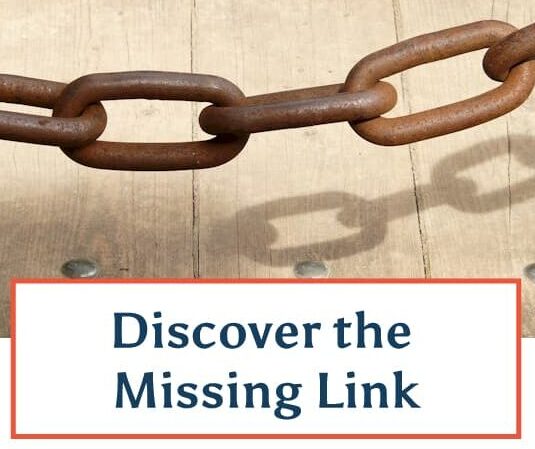When you’re a small business owner, it’s important to choose a website designer carefully. It’s a crucial strategic decision, as a good website can bring you more business and a bad one can drive away prospective customers. Since this decision — and your website — are foundational to your business success, selecting the right website designer is essential. Who is going to do the heavy lifting to make your website shine?
Below are some important things to consider when selecting a website designer for your project. And if you’re re-designing your existing website, here are 18 tips for managing your website redesign project.
What types of website designers are there?
I don’t think there is an “official” definition, so I’ll give you my definition. Sometimes you’ll get all these things in one person/studio. Other times, the work is divided among specialists:
- Website Designer – helps you to determine the page layout, graphics, text location, and colors of your site based on your brand. He helps design the menu/navigation structure and how pages will cross-link to one another. He might also do the actual computer programming and graphic artwork for the site, or may hire out that work to a programming specialist and graphic artist. A Website Designer is also the project manager for your site design.
- Website Programmer – takes the design from the Designer and creates the code to make the site run. She is also responsible for all the technical stuff that happens behind-the-scenes to make sure the site works properly for your visitors.
- Graphic Designer/Artist – creates or choose the graphics for the site, including page layout, colors, logo, photos, illustrations, etc. Think of this person as the “visual artist” who creates the brand image for your site.
- Copywriter – creates the text for your site. This person has unique writing skills and knows how to create website copy that markets your business properly.
- Internet Marketing Consultant – helps you to determine how your website fits into your overall marketing strategy, and how to get more traffic and sales from your website.
A note on copywriting
You may choose a website designer who can also help you with the text for your website but don’t count on it. Be prepared to do your own copywriting, or hire a professional copywriter.
Here are 6 Copywriting Steps for Non-Copywriters from my blog. And when writing headlines, check out my blog post on 3 Headlines Formulas that will help you create the best headlines for your website text.
Consider a hybrid solution: get advice about simple website copywriting principles from a copywriting consultant or teacher, then write the text yourself. Have the consultant edit the text to make sure that it works for your target audience.
Discover the missing link, and solve the mystery of why small business owners aren’t buying your consulting services. Click here to get a copy of my free Missing Link ebook.
Who is a good designer and how much do they charge?
Much of your choice of designers depends on whether you want to work locally with someone, or whether you are willing to work remotely with them over the phone or video conference.
The fees for a new or redesigned website varies depending on the complexity of the project. Expect to pay at least $2,000 for a simple site, and upwards to $10,000 or more for a very complex site.
Most website designer fees fall into the range of $60/hour to $300/hour.
Below are tips for discerning the quality and skills of a website designer…
When you choose a website designer, here are 17 things to consider:
- Pay attention to how much they ask you about your business. They should want to get to know you, your business, your audience, and your marketing goals intimately. How else can they design a site that reflects you, your brand, and your business, unless they spend time to get to know you?
- Look at sites they’ve designed to see if you like their style. Is there a certain feel to all their sites, or are they flexible in their designs? (Will they be able to reflect your brand and needs for your site? Or are they using templates and cookie-cutter designs?)
- Ask them if they did the actual graphic and layout design of the site, or if they just did the programming.
- If they don’t do the graphic work themselves, can they recommend a graphic designer?
- Do they have a structured, systematic planning process that leads you through the design phases? Will they document all the discussions and decisions? It’s helpful if they have a Website Planning Guide that you’ll work through together that documents your decisions.
- Ask them what they know about internet marketing and search engine optimization. Be sure that they’re creating a site for you that meets your larger marketing and business goals. (A pretty site is no good to you unless it generates revenue and prospects.)
- Ask the designer for their fees and what is the estimated cost for the site you want. They may not be able to give you a good estimate until you discuss the content and features of the site. Expect to pay between $80 – $200 an hour, depending on their skill and their location. A quality website with good graphic design and layout will cost around $2,500 – $5,000 for a simple business website. If you add a blog, newsletter, shopping cart, autoresponders, email address setup, SEO, membership site, or logo design (or if you have many pages on your site), expect the price to be higher.
- Ask them how they will bill you. Will they invoice you monthly, or when certain milestones are reached? Do you have to make deposits?
- Pay attention to whether they’ll try to stick within your budget, or whether they keep suggesting new add-ons that increase to the cost of your site. Remember, designers aren’t responsible for your budget — you are. (Also note that it’s your responsibility to stay within the agreed-upon scope, as well.)
- Talk to some of their current and recent clients, to see how smooth the process was. You want someone who has good project management skills AND good communication skills. They have to listen to you, not just give advice. They need to accept when you decided to not take their advice and not get pushy about it. And they have to get back to you in a timely manner with phone calls and emails.
- Ask them whether they will maintain your site after the initial design, and how much they’ll charge for that. Some designers want to create new sites but don’t want to maintain them. Someone like a virtual assistant (VA) may be able to maintain your site for a lower hourly fee, as long as the VA is skilled in website programming. Find out what types of programming and platforms are used in your site, so you can find someone to help you update it.
- If you’re going to maintain the site yourself, ask them if they’ll design your site so that it is easily maintained by a business owner. You can have your site designed on a platform like WordPress, which will allow you to edit the text and some of the graphics.
- Make sure that your contract states that you own the copyright to the entire website (except, of course, for stock photos and graphic…the original photographer/artist owns the copyright to stock images). All content, including graphics that you hired someone to custom-create for you, and all the coding work, should be owned by you.
- Make sure you own your domain name, even if the website designer registered it for you.
- Ask your designer for original, editable source files. You need to be assured that you will be able to edit your website (or have another designer edit your website) with ease.
- You have got to enjoy talking and working with them. Do you LIKE the designer? Do you believe they’ll act ethically? Do you enjoy speaking with them? Do they stay focused to the task at hand, or do they ramble and waste your time? Do you feel you “click” with their personality and values? Do they offer you invaluable insight and advice about your site design?
- Tell each prospective website designer what your deadline is and ask if they can meet it. Many good website designers are already booked for the next 4-6 weeks, so you may have to wait for the designer of your choice. If you don’t have a specific deadline, brainstorm with the designer to create a good working deadline that you can both meet, especially if you will be doing the job of writing the website text.
Your website is crucial to the success of your business. By doing extensive interviewing of potential website designers, you’re more likely to pick one that can do the work you want, is willing to really listen to you, can create a site that reflects you and your business, and keeps within your budget and timeframe.

 If Consumers Can’t Trust Their Friends, Who Can They Trust?
If Consumers Can’t Trust Their Friends, Who Can They Trust?

What an excellent article!!! A must read for anyone hiring a web designer.
Thanks
Susan
I’m glad you found it helpful, Susan.
It’s been my experience that most web designers and programmers will teach how to make general changes to the site after it’s been created. For example, changes in content, maybe even adding pages using a template already created, changing page titles, etc.
However, there will always be more technical things to be done, so finding a developer who can take care of issue when they arise (and they will!) is a good idea.
Thanks for defining the differences between web designers, web programmers, and graphic artists, Karyn. People think these are interchangeable terms for the same job and as you’ve so clearly shown, they are not.